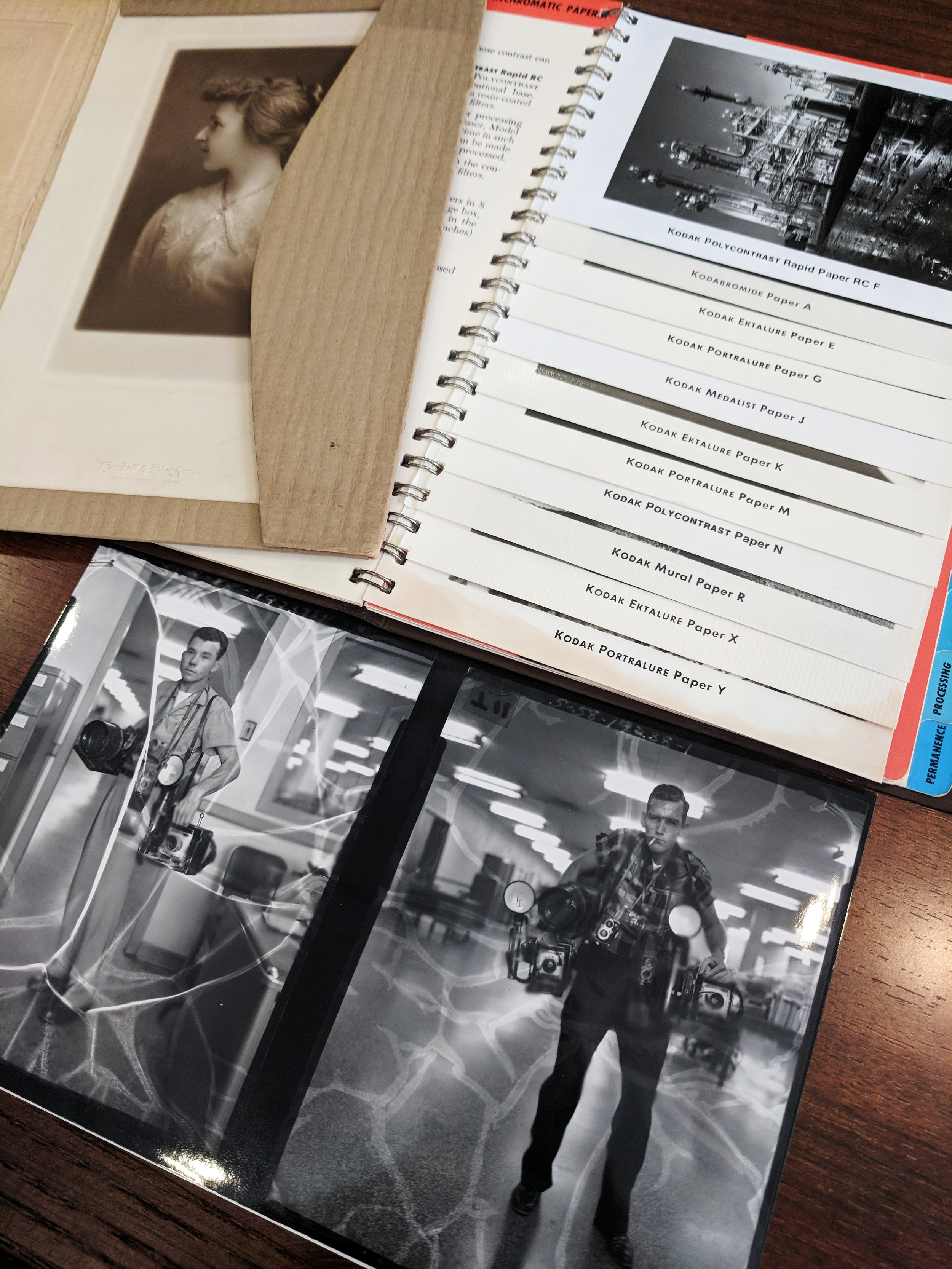Last week, I attended a 3-day workshop in identifying photographic prints at the Chicago History Museum. Developed by the Image Permanence Institute, this was an intensive and incredibly helpful opportunity. Two staff from IPI led the sessions - Jae and Alice - and each day alternated between lectures and hands-on activities. After each lecture, we were able to work with the teaching collection, walking through the methodology we were taught to properly identify the images. This really helped to reinforce the ideas presented, especially by working with a partner to talk through what we were seeing.
Our first day was dedicated to an overview of the development and challenges in creating photographic images. The framework for the rest of the workshop was also established via an introduction to a visual identification guide. This checklist helps establish a methodology to looking with the aim of identification, by inspecting: image content, primary support, image color and tone, image deterioration, surface sheen, image structure (continuous tone or patterned), and layer structure. These visual cues align with the content of Graphics Atlas, an online resource provided by IPI. This way of walking through prints, starting with overall observations and gradually working towards magnification, proved to be very helpful throughout the sessions. They also discussed the earliest processes from the 19th century. We covered photographs on rigid supports - Daguerreotypes, ambrotypes, and tintypes - in addition to silver based printed-out prints on paper - salted paper, albumen, collodion, and gelatin prints.
19th century processes
The next day was spent reviewing non-silver based printed-out prints on paper - carbon, cyanotype, and platinum prints. The rest of the session was spent moving forward into the 20th century, focusing primarily on the most common black and white print form of the century - the silver gelatin developed-out print. After learning about this highly variable print type, Jae and Alice introduced us to color photographic prints - autochrome, carbro, dye imbibition, chromogenic, silver dye bleach, and diffusion transfer prints. We rounded out the day by reviewing the non-photographic counterpart to all the processes we had learned up to this point - photomechanical prints. These included Woodburytypes, photogravures, rotogravures, collotypes, letterpress halftone prints, and offset lithography prints.
Comparing bronzing with an overexposed POP print with silver mirroring on a degrading DOP print.
20th century process: silver gelatin DOP
The last day moved us into the 21st century and digital printing technologies - inkjet, electrophotography, and dye diffusion thermal transfer prints. We put all our knew knowledge to work by working through the identification of ten prints, which ranged from the earliest to the most contemporary processes. It could have been overwhelming, but knowing the steps helped guide the process. And it was just as helpful to incorrectly identify prints, as Jae and Alice then provided us with additional help on how to get to the right answer. My partner and I went through several packets of prints, and we felt fairly confident by the end! We also had the opportunity to look at some of the photographic prints in the collection at the Chicago History Museum. It was nice to ground everything we had learned with these samples - these are the types of prints we are likely to encounter in the future, and may have to identify without the assistance of our IPI experts.
Teaching collection test!
I went into the experience hoping to gain some greater understanding of print images, and I was floored by how much content we covered, and how effective the instruction and format of active learning were. I still have much to learn, but I am so grateful for the opportunity to get this crash-course in photographic (and photomechanical) print identification.
Print viewing in archival storage at the Chicago History Museum
Early processes in CHM’s collection
A later process in CHM’s collection






